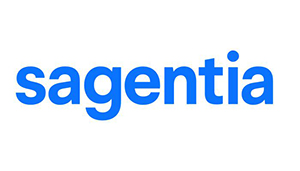 Connectivity, one of the newest buzzwords in the medical device lexicon, is becoming more and more integral to device design and development. Research shows that connected health devices can improve patient outcomes by increasing adherence and reducing dosing variability.
Connectivity, one of the newest buzzwords in the medical device lexicon, is becoming more and more integral to device design and development. Research shows that connected health devices can improve patient outcomes by increasing adherence and reducing dosing variability.
Mark David Tuckwell, head of electronics, software & systems at Sagentia, says connected device can also provide crucial information to help companies differentiate their products in R&D.
Some of the industry’s leaders in connected devices, including Adherium (ASK:ADR), Propeller Health and Companion Medical, improve their product’s usability by bringing the hospital to the patient and putting them in charge of their own care, Tuckwell said last week at the annual Drug Delivery Partnerships conference in Florida.
But as technology continues to rapidly evolve, the medtech industry is racing to keep pace, looking to incorporate connectivity – and a slew of incoming data – into its business model.
Defining the data
As the industry rushes to collect adherence and patient outcome data from connected devices, Paul Jansen, former head of medical devices at Sanofi (NYSE:SNY), warns that too much data is a problem.
“If it all comes on different apps, it’s a nightmare. Not only is it too much data, but it doesn’t even talk to one another. So we have to find some system where it all connects,” he says. “In parallel, we have to figure out how we’re going to use the data that we do collect and I think we’re just starting.”
Jansen suggested that as connectivity finds its way to disposable devices, like pre-filled syringes, the business model will change and integrating connectivity will have to become cheaper.
“You need to give me at 10¢ sensor and the 10¢ sensor is probably not using a traditional battery – it has to use some other means of capturing the energy to run the system. I think when we get to that point, then you’ve really got something that’s interesting.”
But perhaps the most crucial part of integrating connectivity into a company’s business plan is making the data meaningful, Jansen said.
“You have to define what it is that the data you collect is going to be trying to do,” he said.
Inventing a business model
From a regulatory standpoint, collecting potentially millions of data points from connected health devices could pose problems. Companies and regulators are still trying to sort out basic but complex questions about health data.
“I don’t think we have yet a model that is completely scalable, fully implementable,” says Arnaud Marie, global VP at Becton Dickinson (NYSE:BDX). “We are all looking at who in that chain, who is owning the data, who is distributing the data, what is the data for? Will it help compliance? Will it help the paying structure? I still think we have a lot to invent in that field.”
Companies will have to work with regulators and demonstrate that the incoming data is useful, adds Mahesh Chaubal, VP of R&D at Baxter (NYSE:BAX).
“That’s another area where we have to work with the regulators to demonstrate the benefit that connective health is bringing and balance it on the other side with all the data that’s coming along,” Chaubal says.
Peering into the future
As researchers devise new technological advances, it seems that once-far-fetched ideas, like Star Trek’s tricorder diagnostic device, are within reach. Tuckwell predicted that future connected health devices will include smart patches and injectors that communicate with consumer technology, such as Amazon’s Alexa.
Active drug-delivery implants are another frontier for connected devices, according to Nima Akhavein, investigator & CMC lead for drug delivery technology at GlaxoSmithKline (NYSE:GSK).
“One of the things that we’re thinking about, for example, is a sustained release implant of some sort that a patient’s able to control more effectively externally,” Akhavein says.

